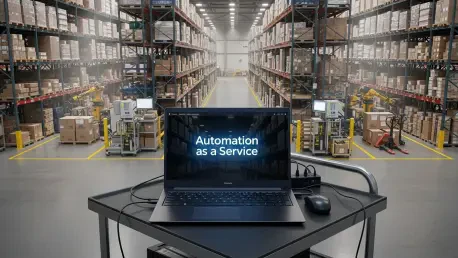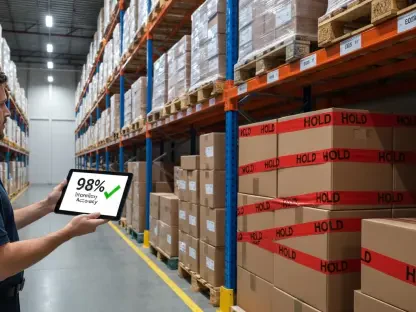In an era where warehouse efficiency can make or break a business, a transformative solution has emerged to address the daunting challenges of automation adoption. High upfront costs, technical complexities, and operational risks have long deterred companies from embracing advanced systems, leaving many struggling to keep pace with the demands of modern logistics. However, a pioneering approach by a leading automation partner is set to change the game. This innovative model, known as Automation as a Service (AaaS), offers a subscription-based framework that promises to make cutting-edge technology accessible to businesses of all sizes. By eliminating traditional barriers and focusing on performance-driven results, this service redefines how warehouses operate in a competitive landscape. The introduction of such a model signals a shift toward flexibility and scalability, ensuring that companies can adapt to evolving market needs without the burden of significant capital investment.
Breaking Down Barriers with a Subscription Model
The core appeal of Automation as a Service lies in its ability to remove the financial hurdles that often accompany warehouse automation. Instead of requiring substantial upfront investments for equipment and infrastructure, this model operates on a subscription basis, allowing businesses to pay only for the performance they need. This approach mirrors the simplicity of everyday services like streaming platforms, where costs align directly with usage. Companies can now access tailor-made solutions that integrate advanced software and hardware without the stress of ownership or long-term financial commitments. The predictable operational expense structure ensures that budgeting becomes more manageable, freeing up resources for other critical areas. Additionally, the service includes continuous optimization, meaning that systems are regularly updated to maintain peak efficiency, all without extra costs to the customer.
Beyond financial relief, this subscription framework offers a level of risk mitigation that is unprecedented in the industry. The service provider assumes joint responsibility for the operation of the automation systems, handling everything from installation to ongoing maintenance. This shared accountability means that businesses face minimal downtime and can rely on guaranteed performance levels. Live monitoring and expert support are also integral components, ensuring that any issues are swiftly addressed before they impact productivity. For growing companies or those with fluctuating demands, the scalability of the model is a significant advantage. Whether a business needs to ramp up operations during peak seasons or scale back during slower periods, the flexibility of AaaS adapts seamlessly to those changes, providing a safety net against uncertainty.
Enhancing Productivity Through Partnership
A distinguishing feature of Automation as a Service is its emphasis on fostering a true partnership between the provider and the customer. Rather than simply delivering technology, the model focuses on integrating solutions that align with specific business goals, ensuring maximum productivity. Expert teams work closely with clients to design systems that address unique operational challenges, from inventory management to order fulfillment. This collaborative approach reduces the strain on internal resources, allowing companies to concentrate on their core competencies while the automation provider handles the technical intricacies. As a result, warehouse operations become more streamlined, with improved throughput and accuracy that directly impact the bottom line.
Moreover, the model caters to a diverse range of businesses, from small enterprises to large third-party logistics providers. For organizations prioritizing their primary functions over managing complex systems, this service offers a hands-off solution without sacrificing control. Performance guarantees ensure that uptime and efficiency remain consistent, even as business needs evolve. The provider’s commitment to ongoing support also means that customers are never left to navigate challenges alone. With over 400 successful projects under their belt, the expertise behind AaaS brings a wealth of knowledge to every implementation, tailoring strategies that drive long-term success. This customer-centric focus transforms automation from a daunting investment into a strategic asset that propels growth.
Sustainability and Long-Term Responsibility
Another compelling aspect of Automation as a Service is its dedication to sustainable practices within the logistics sector. By retaining ownership of the technology, the provider manages the entire lifecycle of the equipment, from deployment to eventual decommissioning. This approach ensures that systems are handled in an environmentally responsible manner, minimizing waste and promoting recycling where possible. Customers are relieved of the burden of disposal or upgrades, as the provider takes on the long-term risks associated with equipment management. This not only aligns with growing demands for greener operations but also positions businesses as forward-thinking in their environmental impact.
Financial and operational risks are further mitigated through this lifecycle ownership model. The provider absorbs the challenges of financing and optimization, allowing customers to focus on day-to-day operations without worrying about future costs or obsolescence. This dual focus on sustainability and financial flexibility makes AaaS a standout solution in an industry increasingly driven by both profit and purpose. Businesses can confidently adopt automation knowing that their environmental footprint is being managed responsibly. As logistics continues to evolve, such models pave the way for a future where efficiency and ecological consciousness go hand in hand, offering a blueprint for responsible innovation.
Reflecting on a Transformative Shift
Looking back, the launch of Automation as a Service marked a pivotal moment for warehouse operations across Europe. It tackled longstanding obstacles with a fresh perspective, blending financial accessibility, operational support, and environmental stewardship into a cohesive package. The subscription-based framework, backed by decades of expertise, delivered on its promise to simplify automation while enhancing productivity. For businesses that once hesitated to embrace such technology, this model provided a low-risk entry point that reshaped their competitive edge. Moving forward, the focus should remain on expanding awareness of such innovative solutions, encouraging wider adoption across industries. Exploring how this approach can integrate with emerging technologies will also be crucial, ensuring that logistics remains agile in a dynamic market. This shift underscored the power of partnership in driving progress, setting a precedent for future advancements in the field.









